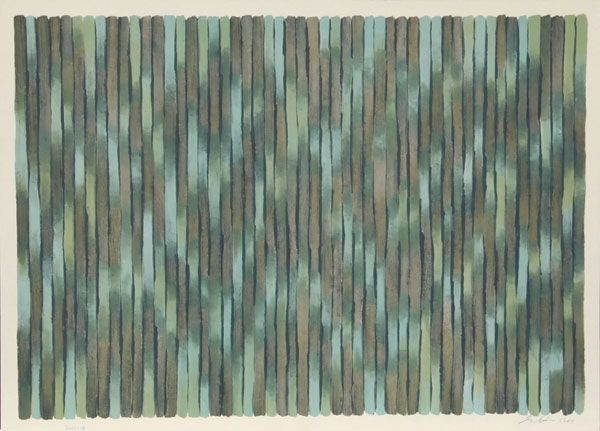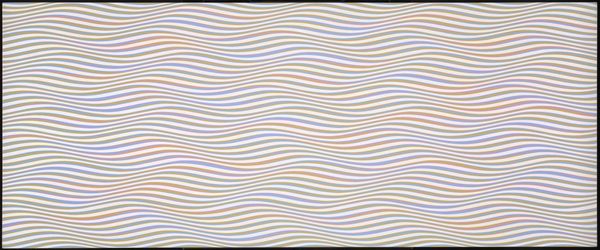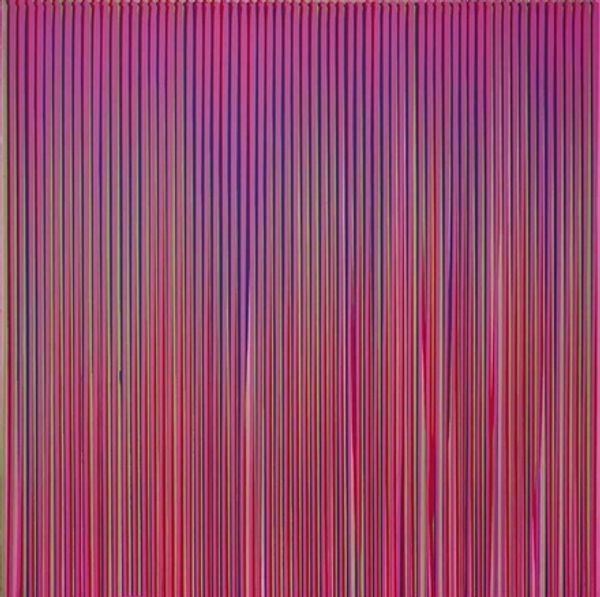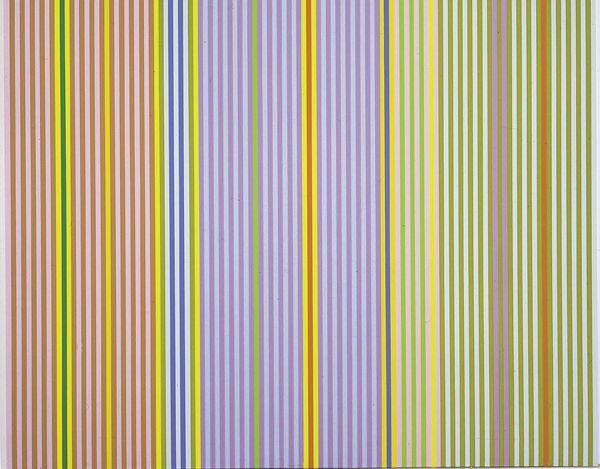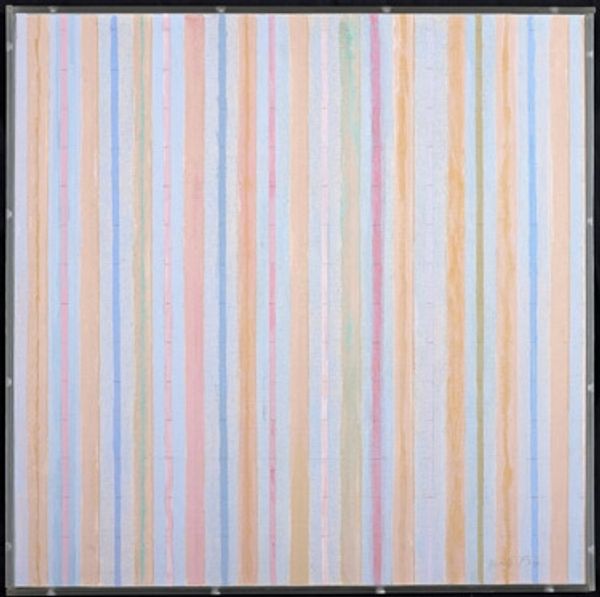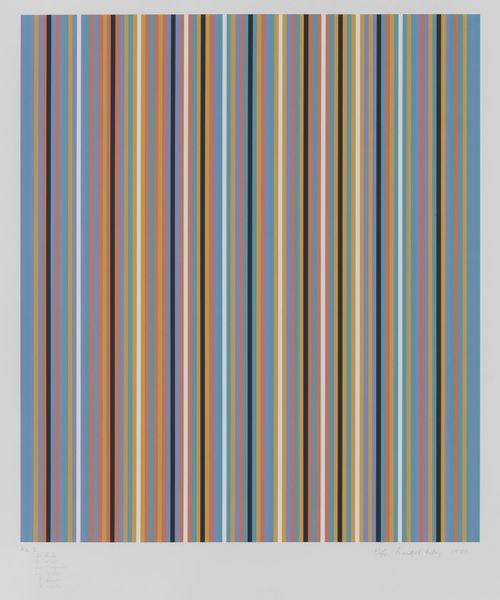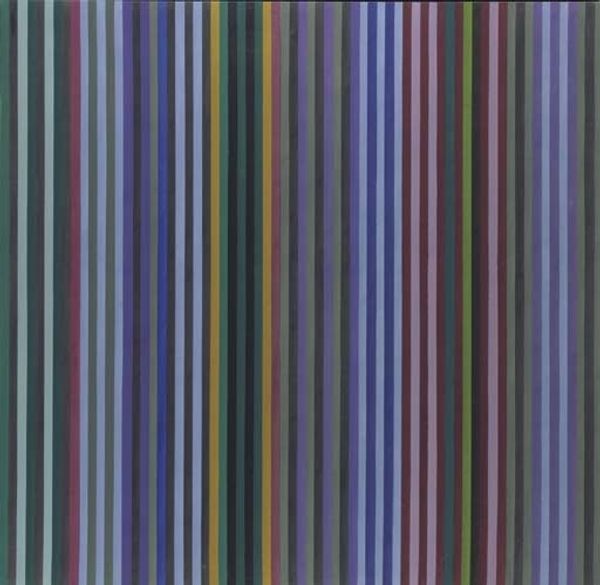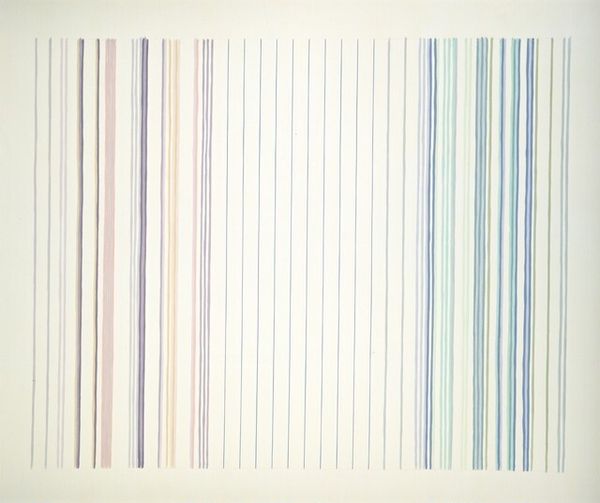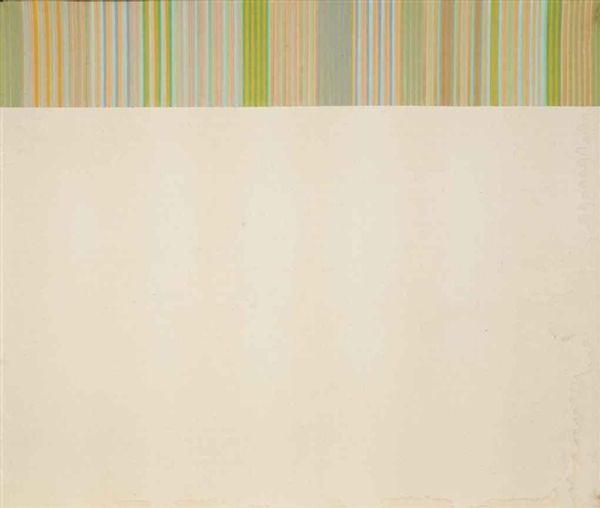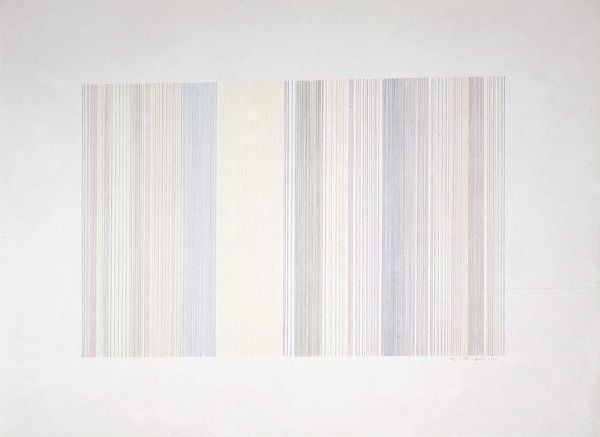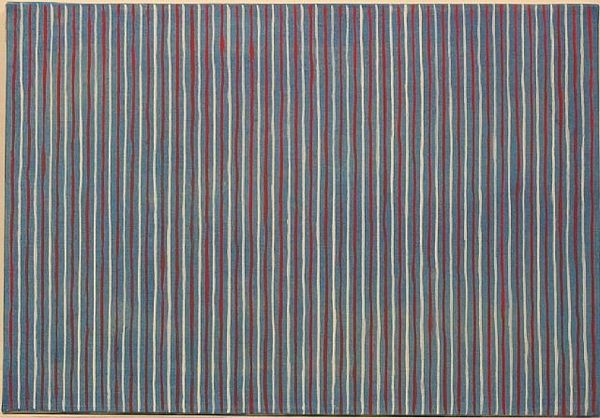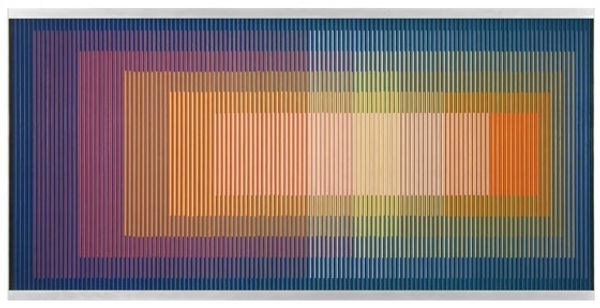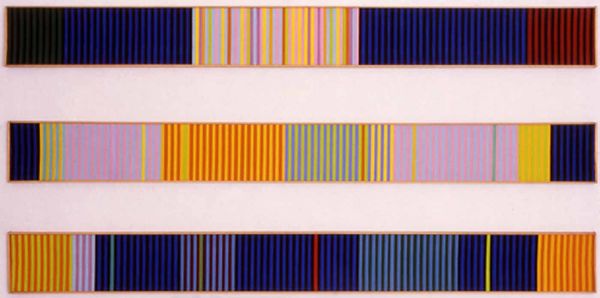
Copyright: Gene Davis,Fair Use
Curator: Before us, we have "Pocono," an acrylic on canvas artwork by Gene Davis from 1984. What are your initial thoughts? Editor: I am immediately struck by the overall calmness, almost a pastel dreamscape. It's rhythmically vertical, yet somehow feels very gentle. The canvas's texture feels integral. Curator: Indeed. Davis, known for his stripe paintings, explores here a slightly muted palette. Note how the varying widths and subtle color shifts of the stripes create optical vibration across the surface. There's an active tension. Editor: Active, but controlled. Thinking about production, I wonder about the repetitive process of creating these lines. Was there meticulous masking, or was it all hand-painted, giving each stripe a unique character? It prompts questions about labor and intention. Curator: The hard-edge style, even in this softer iteration, invites a deeper formal investigation. Observe the relationships between each chromatic field. There are no apparent focal points, which emphasizes pure color interaction. Semiotically, we could argue the repetitive stripes destabilize meaning. Editor: And speaking of instability, the choice of acrylic. Was it a deliberate challenge to traditional oil painting? Or a more practical solution for the artist? These choices must have also been shaped by prevailing studio practices and consumption habits. Curator: Your perspective anchors it in its era. Formally, "Pocono" advances color field painting through simplified means. There is a phenomenological invitation here: experiencing color as an act of perception itself. Editor: Perhaps a little mundane? Doesn't art also emerge from the socio-economic ground? This pattern looks almost digitally designed. Davis, in 1984, was perhaps anticipating the upcoming age of reproduction and image culture? Curator: A fair point. Digitality presaged. Still, from a purely aesthetic vantage, "Pocono" manifests how simple structures yield nuanced visual complexity. A rigorous arrangement, ultimately. Editor: Yes, even with its understated materials, the interplay between process and structure invites continuous reinterpretations. Curator: "Pocono" offers a spectrum of interpretations from structural analysis to process examination, demonstrating Davis’ contribution to abstract art. Editor: I now view that it creates visual delight while opening up insights into studio practice.
Comments
No comments
Be the first to comment and join the conversation on the ultimate creative platform.

